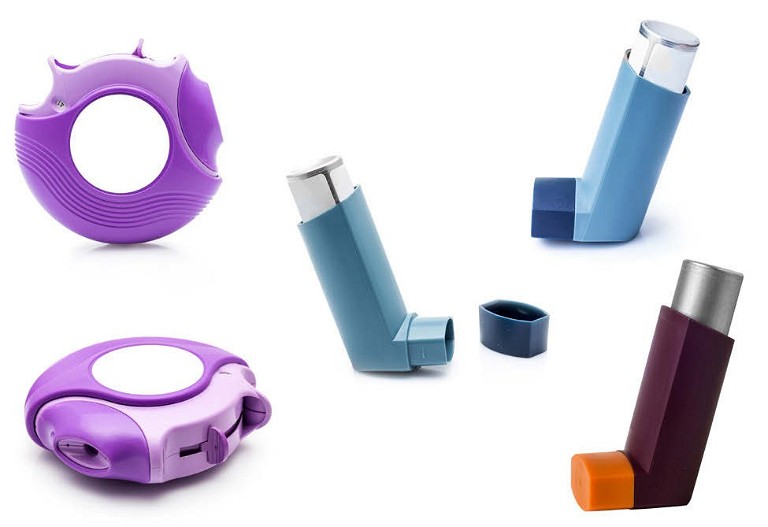Manufacturing: Drug Delivery Systems
Making Inhaled Therapies Fit for the Future: Improving the Sustainability of Pressurised Metered Dose Inhalers
Since their introduction in 1956, pressurised metered dose inhalers (pMDIs) have become the dominant treatment choice for patients suffering from common respiratory diseases such as asthma and chronic obstructive pulmonary disease (COPD). However, unbeknown to most patients and many doctors, pMDIs account for 3.9% of NHS’s annual carbon emissions. 1Here we will discuss how formulation changes might be the answer to the pMDI-related sustainability problem
Andrew Lee at Broughton
The role of propellants in a pMDI system is to provide the required pressure to atomise the drug formulation into a micron-scaled aerosol, allowing for effective delivery into the lungs. Due to their well-established toxicological profiles and ideal physical properties, when initially developed, pMDIs utilised chlorofluorocarbons (CFCs) as the propellants of choice. Fast-forward to 1987, however, and CFCs were soon to be replaced; the Montreal Protocol was signed, banning the use of CFCs due to their depletion of stratospheric ozone. 2Although pMDIs were technically exempt from the legislation as essential medicinal devices, the use of CFCs as propellants was halted just a few years later.
In place of CFCs came a group of compounds known as hydrofluorocarbons (HFCs) – molecules that make for similarly effective pMDI propellants but without the effects on the ozone layer. The cost to pharmaceutical companies of developing these new formulations, alongside accompanying hardware, manufacturing processes and clinical data, was hundreds of millions of dollars. Now, it seems, they will have to do it all over again.
The Problem With HFCs
The shift from CFCs to HFCs across all industries resulting from the Montreal Protocol was not just beneficial to the ozone layer; it also represented a seismic decrease in global carbon emissions of approximately 11 gigatonnes between 1985 and 2010.3While leaving CFCs in the past was certainly an improvement, HFCs are still potent greenhouse gases (GHGs), with global warming potentials (GWPs) of up to 3,350 times that of CO 2. 4These gases can survive for long periods of time in the upper atmosphere, contributing to the rise in global temperatures.
HFCs are part of a basket of what’s known as fluorinated gases (F-gases), all known to be powerful GHGs. The EU began regulating their use back in 2006, setting out targets for a reduction. This was followed by an amendment to the Montreal Protocol in 2016, known as the Kigali Amendment, which sought to regulate the phase-out of HFCs altogether.
In reality, the majority of F-gas emissions come from other applications, such as refrigeration, not pMDIs – in fact, their use constitutes just 2.3% of global F-gas emissions.4
Nevertheless, the need to phase out the use of HFCs in pMDIs remains, especially as demand for inhaled therapeutic medicines grows with increasing population sizes and disease prevalence. This need has already been recognised in the UK, for example, where the NHS laid out plans to reduce the usage of high-GWP pMDIs in its Delivering a ‘Net Zero’ National Health Service report.5
So, what can be done? How best can the pharmaceutical industry reduce the use of HFCs while maintaining the appropriate level of care for patients?

A Change in the Device
The first option is to change the device entirely; pMDIs are by far the most popular type of inhaler but by no means the only type. Another type of inhaler, already established on the market worldwide, is the dry powder inhaler, or DPI. As the name suggests, DPIs deliver medicine to the lungs in the form of a dry powder, with the formulation typically held in a capsule for manual loading or a proprietary form inside the inhaler. Delivery of the powder is breath-actuated, requiring a sharp, deep inhalation for delivery of the medication.
DPIs have the distinct environmental advantage of containing no propellants and, therefore, no HFCs. Estimates performed by the Carbon Trust in conjunction with GSK have shown that the life cycle carbon footprint of DPIs can be as much as 24 times lower than that of their propellant-based counterparts.6Meanwhile, an analysis of a Chiesi Farmaceutici pMDI and equivalent DPI put the figure at a 12-fold decrease – asignificant reduction. 7
So, if DPIs are the obvious choice from an environmental perspective, why not just switch patients over to them? If only it were that simple.
The first thing to recognise is that these are, of course, devices to help treat patients; therefore, patients must remain the priority. For an effective switch, an inhaler must be appropriate for the needs of the patient for whom it is prescribed. This will need to be done on a patient-by-patient basis, with no one rule for all. Many patients struggle to coordinate the hand actuation and inhalation required to receive an effective dosage from a pMDI, a problem negated by the use of a DPI. Meanwhile, some patients – typically the very ill, elderly or very young – will be unable to generate sufficient inspiratory flow to correctly actuate a DPI, in which case only a propellant-driven pMDI will suffice.
Cost is another important consideration; it is generally agreed that DPIs are the more expensive option. This may change as the costs of high-GWP HFCs increase in the coming years or if production of DPIs ramps up and their price drops through economies of scale. Even then, for the reasons discussed above, a total shift away from pMDIs seems unlikely, and so another solution may be required.
Time to Reformulate?
Assuming pMDIs are here to stay, a low-GWP alternative to current propellants must be developed. So far, two potential options have been identified: HFC 152a (GWP = 138) and HFO 1234ze(E) (GWP = <1).4Both of these represent a marked improvement when compared with current on-market propellants.
Of the two next-generation propellants, HFO 1234ze(E) would likely be the preferred candidate. This isn’t just because of its remarkably low GWP, but also because its physical properties, such as density, vapour pressure, moisture solubility and dipole moment, much more closely resemble those of HFCs 134a and 227ea, both of which are commonly used in pMDI inhalers today.4
Within a pMDI, maintaining seal integrity and achieving consistent aerosol delivery performance throughout the product’s shelf life is essential. This is mostly achieved through the design of the valve, which is highly dependent on the physical properties of the formulation.
“The need to phase out the use of HFCs in pMDIs remains, especially as demand for inhaled therapeutic medicines grows with increasing population sizes and disease prevalence”
Having similar properties to current propellants will help expedite the development pathway somewhat, since it reduces the design burden on the valve required to ensure that the formulation will atomise and deliver the drug similarly to before.
However, regardless of physical similarities, using new propellants will require long-term human safety studies, extractables and leachables assessments, chemical stability and compatibility with existing formulation components (the API or excipients) before a market authorisation is granted. These are not particularly speedy endeavours, especially given that the new propellants lack comprehensive inhalation safety data and that pharmaceutical-grade material manufactured to GMP standards is still not widely available.
HFC 152a, on the other hand, is a precursor used in the chemical synthesis of polymers and is already used commercially in some non-clinical propellant applications. This makes it cheaper than HFO 1234ze(E) and more comparable with currently available HFC propellants in price. Prototype formulations using HFC 152a are promising, with good pharmaceutical performance reported despite the significant differences in physical properties between it and the higher GWP propellants used today.8
When Might We See Novel pMDIs on the Market?
The pharmaceutical industry has already begun working on next-generation propellants for pMDIs. In 2022, Koura opened the world’s first HFC 152a production facility in Runcorn, UK. The opening of this facility goes hand-in-hand with Chiesi Farmaceutici’s announcement of a commercial agreement to use the new low carbon footprint medical propellant for inhalation product development and clinical trials.9Meanwhile, AstraZeneca has taken a different approach, developing an HFO 1234ze(E) pMDI, which has already passed through phase 1 clinical trials. 10The results in healthy adults were positive, demonstrating similar safety, tolerability and systemic exposure of the active ingredients when compared to current on-market formulations. Both companies have announced that they plan to launch their new pMDIs by 2025, an ambitious target considering the time pharmaceutical product development takes.
For smaller pharmaceutical companies developing the next generation of inhalers, it's important to leverage expertise where they can, as often this might not be found internally within the firm. Working with inhalation specialist CROs who understand the regulatory environment and can support the product development process from start to finish, can help expedite the process and avoid mistakes along the way.
Whether we see the next generation of pMDIs in 2025 or later, their mere development by companies like Chiesi, AstraZeneca and GSK signal an end to the debate on how to reduce the environmental impact of inhalers.
Will we see more DPIs being prescribed? Almost certainly, but the development of low-GWP propellants suggests that pMDIs will continue to dominate treatment for years to come.
References

Andrew Lee is a senior consultant at Broughton. As an experienced development scientist with a demonstrated history of working in the pharmaceutical industry, Andrew develops, designs and implements E&L studies in support of material selection, product packaging design and final product safety assessments. This includes developing and validating tailored analytical methods for analysing targeted leachables through shelf-life assessments. He holds a Bachelor’s in Analytical Chemistry from the University of Huddersfield, UK.